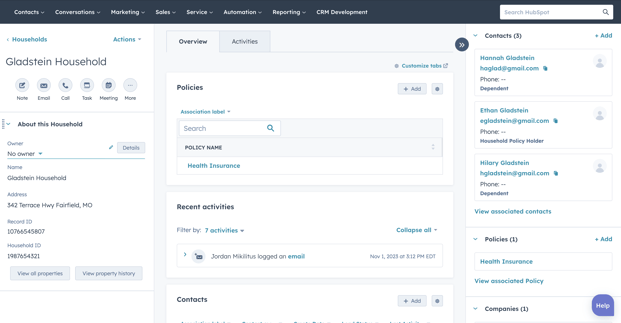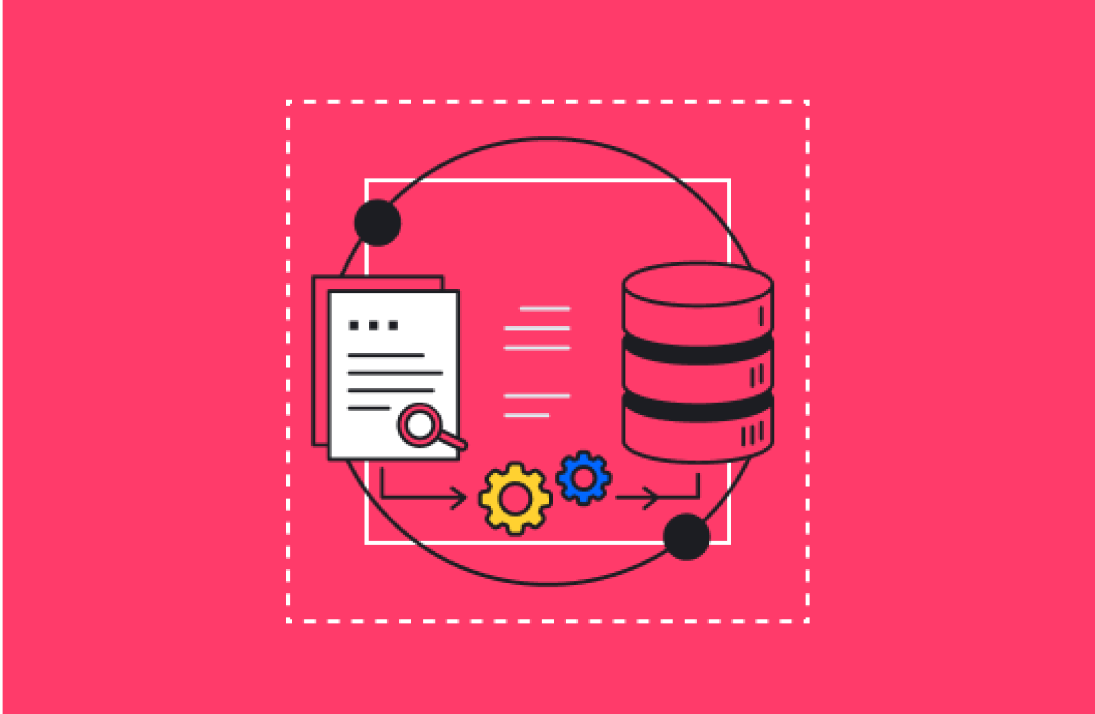HubSpot association labels give teams powerful control over how records are related inside the CRM. Whether you’re working with deals, contacts, companies, or custom objects, these labels let you define those relationships with precision. From reporting to automation, HubSpot association labels enhance how your CRM supports your business processes. In this guide, we’ll break down exactly how to use association labels in HubSpot, show real-world use cases, and explain how to scale your data strategy using advanced features like multi-label associations and automated workflows.
Introduction to Associations
Before we dive into association labels, let’s do a quick overview on associations in HubSpot.
Associations refer to the connections or relationships between different records within the platform. These records can include contacts, companies, deals, tickets, and custom objects.
Associations are crucial in HubSpot as they help in organizing and tracking the interrelationships between various data points. For instance, you can associate a contact with a company they work for, link a deal to a contact involved in that deal, or connect customer support tickets to specific contacts or companies.
.png?width=720&height=324&name=Association%20Labels%20(1).png)
Types of associations include:
-
Contact-Company Associations: Links individual contacts to companies, establishing a clear relationship between a person and the organization they are associated with. If John Doe works for ABC Corp, a contact-company association label would link John’s contact record to ABC Corp’s company record.
-
Deal-Contact Associations: These labels connect specific deals to individual contacts. On your deal record, you can quickly access your point of contact for the deal.
-
Deal-Company Associations: Similar to deal-contact associations, these labels link deals directly to companies. This is particularly useful for B2B interactions where deals are often negotiated with companies rather than individuals.
-
Ticket-Contact Associations: In customer service, it’s essential to link support tickets to specific contacts. These association labels facilitate this connection, helping support teams provide personalized and efficient service.
-
Ticket-Company Associations: Similar to ticket-contact associations, these link tickets to companies. This is particularly useful for B2B support scenarios.
-
Custom Associations: HubSpot also allows the creation of custom associations, tailored to specific business needs. These are particularly useful for unique business models or specialized CRM processes. For example, if you have a custom object for Events, on an event record, you could associate the event coordinator’s contact for quick reference.
Introduction to Association Labels
HubSpot association labels allow users to further define and categorize these associations between different records in the HubSpot CRM. The primary purpose of association labels is to provide additional context to the relationships between records, and they deliver a dynamic solution for managing complex data relationships.
With their flexibility, HubSpot users can effectively organize and access their growing data pools, ensuring that association labels in HubSpot remain a robust tool that can adapt to the evolving needs of large-scale businesses..

Multi-label Associations
You can also have multiple labels on associations in HubSpot. This allows you to apply multiple labels to a single association between records, offering a nuanced way to elaborate on the nature of relationships. This feature enhances the flexibility and depth of your data organization, allowing for more detailed tracking and categorization of interactions and complex relationships.
Richer Relationship Context
By using association labels HubSpot features, you can describe the relationship between records in greater detail. For instance, in a contact-company association, you might use labels like “Financial Contact” and “Decision Maker,” or “Influencer,” to indicate the contact’s role in relation to the company.
Real World Application
Let’s say you’re in the insurance industry and you offer a range of policies including home, auto, and life insurance and serve a varied client base. You could use association labels in HubSpot to categorize your contacts that are associated with different policy records as “Policy Holder,” “Dependent,” or “Beneficiary.”
These labels allow you to understand the relationships your contacts have to the policy, so that when they reach out to submit a claim or update a policy, your customer support team can quickly see how they are related to the policy.
Improved Data Segmentation
Multi-label associations allow for more precise segmentation of your data. This is particularly useful in marketing and sales, where understanding the specific nature of a relationship can lead to more targeted and effective strategies.
Real World Application
Let’s say you have an event associated with multiple sponsors. Those sponsors can be given labels based on their sponsor tier (Silver, Gold, etc.) and you can label them based on the duration of their partnership like (Long-term Partner, New Sponsor, or One-time Sponsor) to elaborate on their relationship with the event.
This enables better segmentation of sponsors, such as grouping those labeled as ‘Gold Tier’ and ‘Long-term’ for personalized communications.
Enhanced Reporting and Analytics
With the ability to categorize associations more granularly, you can generate more insightful reports and analytics. This detailed view can reveal trends and patterns that might be missed with non-labeled associations.
Real World Application
Let’s consider a company-deal example. Let’s say you’re a technology solutions provider that collaborates with other businesses to secure deals. In a recent scenario, you are closing a deal with a client, “Enterprise Solutions,” that was referred to you by another agency, “Durango Co.”
For Durango, you might use “Referral Partner” as an association label to indicate that they are the partner in the deal and should also be paid a commission or referral fee. You can build reports on who your most productive referral partners are and your commissions paid vs lifetime revenue generated.
Customization for Complex Sales Processes
In complex B2B sales environments, relationships often cannot be defined by a single label. Multi-label associations enable a more accurate depiction of these complex relationships, improving your ability to manage and nurture them effectively.
Real World Application
Consider a scenario where your company is negotiating a deal with a company for a comprehensive IT overhaul. This deal has two key contacts involved in the process, the Director of IT and the CFO. Both of these contacts are associated with the deal record.
The Director of IT is deeply involved in the technical specifications so you use the association labels “Technical Expert” and “Project Advocate.” The CFO is the ultimate decision-maker for this deal and focuses more on the financial viability and the strategic impact of the IT overhaul. For the CFO, the labels “Budget Holder” and “Decision Maker” are used.
By clearly distinguishing these roles through multi-label associations, your team can tailor communication and proposals to address the specific concerns and priorities of each contact, thereby enhancing the chances of successfully closing the deal..
Facilitating Advanced Workflows
You can use HubSpot association labels to trigger more sophisticated, condition-based workflows in HubSpot. This allows for automation that is more closely aligned with the specific nuances of your relationships.
Real World Application
Consider this SaaS example. Let’s say you’re a SaaS company and you just received a support ticket from a client, reporting an issue. If you’re managing support teams, understanding the difference between tasks vs tickets in HubSpot can further streamline how workflows are assigned. In this example, two contacts are associated with the ticket. One is the IT Manager, who will be directly involved in resolving the issue, and the other is the Chief Operations Officer (COO), who just needs to be kept in the loop.
You use multi-label associations in your HubSpot instance to categorize these contacts:
IT Manager: Labeled as “Primary Contact”
COO: Labeled as “Status Update Recipient”
When the IT Manager is labeled as “Primary Contact” you can trigger a workflow sending detailed technical communication and requests for additional information necessary for troubleshooting.
The COO is labeled “Status Update Recipient” and these labels can be used to trigger a different workflow. This might include sending summarized updates about the ticket’s status, major developments, and eventual resolution, without the technical details.
Association Labels Automation
You can take record relationships one step further by automating associations and association labels via workflow. This can be done two ways: using a Custom Coded Action or with hapily’s HubSpot Marketplace app, Associ8.
Associ8 allows you to automate the association or unassociation of records within the system, as well as the ability to apply or peel labels from associations. This versatile tool utilizes fixed values or dynamic tokens to establish connections between records, either within the same or different object types.
Associ8 also excels in more complex scenarios, such as creating entire code-free applications using custom objects and forming links between records based on matching IDs. This makes it an indispensable tool for pushing the boundaries of what can be achieved in HubSpot.
It’s also very user-friendly, integrating seamlessly into the regular workflow tools in HubSpot.
Advanced Data Management with HubSpot
HubSpot’s association labels hubspot feature offers unparalleled opportunities for data management, workflow automation, and customer relationship enhancement. Whether you’re managing complex sales processes, facilitating advanced workflows, or looking to leverage enhanced reporting and analytics, HubSpot’s evolving features are designed to meet and exceed the demands of sophisticated, enterprise-level solutions.
If you’re ready to get started or think your association labels need an overhaul, let's chat!






